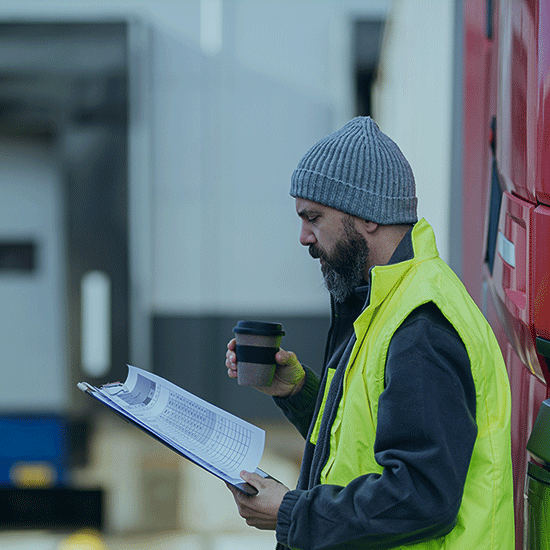If you run a trucking business—whether you manage a fleet or drive your own rig—the Department of Transportation (DOT) plays a role in nearly everything you do. From the licenses your drivers have to carry to the various inspections your vehicles face, DOT regulations shape how commercial transportation operates every day. But for all the forms, filings, and acronyms, some drivers and fleet managers don’t have a full understanding of what the DOT actually is or how its different branches affect their business.
That makes it all the more important to know how the DOT is structured and what it’s responsible for. From federal rulemaking to safety enforcement, the DOT affects everything from your daily operations to long-term business strategy. In this blog, we’ll look into its origins, highlight the agencies that matter most to fleets, and cover the regulations every carrier needs to meet.
What is the DOT? A History
The U.S. DOT was established in 1966 to unify the country’s transportation oversight under one federal agency. Before that, regulatory responsibilities were scattered across various departments, which made it hard to effectively coordinate safety standards and infrastructure policy. The creation of the DOT established a more centralized strategy to managing the growing complexity of interstate travel.
While the DOT oversees all modes of transportation—air, rail, highway, and maritime—its role in commercial trucking is particularly significant. Through agencies like the Federal Motor Carrier Safety Administration (FMCSA), the DOT sets and enforces the safety, licensing, and compliance rules for carriers and drivers. These regulations are designed to prevent accidents and support the safe movement of goods across the country.
Today, the DOT functions as the regulatory backbone of the transportation industry, and influences trucking at every mile.
The DOT’s Role in Trucking and Commercial Transportation
Within the trucking industry, DOT regulations shape how fleets operate—from when a driver can start their shift to what happens during an inspection or crash investigation. If you’re running trucks, you’re operating under numerous rules enforced by DOT agencies, even when you’re not thinking about them.
Most of that oversight flows through the FMCSA, which handles licensing, hours-of-service enforcement, safety audits, and more. But other branches get involved too, especially if you’re hauling passengers or hazardous materials. Knowing where the rules come from and how they’re applied is essential to staying compliant and keeping your fleet on the road.
The Impact on Fleet Safety
Fleet safety is central to DOT’s mission. Through programs like Compliance, Safety, Accountability (CSA), the DOT tracks safety-related data and flags high-risk behavior across all registered carriers. Violations tied to hours of service, maintenance issues, or driver conduct can all damage your CSA score, which follows your fleet across inspections and insurance reviews.
DOT safety standards set the baseline, but it’s how fleets respond that makes the difference. The companies that treat safety as part of daily operations and create thoughtful and comprehensive fleet safety policies are the ones that perform best in the real world.
Key DOT Agencies for Fleets
The DOT is made up of several agencies, but only a few directly impact day-to-day trucking operations. These are the ones fleet managers deal with most often for licensing, compliance, or safety enforcement.
FMCSA (Federal Motor Carrier Safety Administration)
FMCSA is the primary agency overseeing interstate commercial trucking. It handles hours-of-service (HOS) regulations, driver licensing requirements, and electronic logging device (ELD) mandates. FMCSA also administers the CSA scoring program and issues DOT numbers for registered carriers. For most fleets, this is the agency you’ll interact with the most, whether you’re undergoing an audit or updating compliance records.
PHMSA (Pipeline & Hazardous Materials Safety Administration)
PHMSA regulates the transport of hazardous materials. It sets rules for proper labeling, documentation, routing, and registration for hazmat carriers. Violations with this agency come with steep penalties, and compliance is critical if your fleet handles anything classified as dangerous goods.
NHTSA (National Highway Traffic Safety Administration)
NHTSA develops and enforces vehicle safety standards, including rules related to crashworthiness, braking systems, and electronic stability controls. It’s also responsible for vehicle recalls and for collecting and analyzing crash data used to inform future safety regulations.
FTA (Federal Transit Administration)
FTA oversees public transit operations. If your fleet includes passenger shuttles or contracts with a municipality, this agency may apply. Otherwise, most freight carriers won’t interact with the FTA regularly.
DOT Regulations for Fleets: 5 Must-Know Categories
DOT regulations cover a lot more than just logging hours or passing inspections. These five categories are especially important for fleet and driver compliance.
Hours-of-Service & ELDs
HOS rules limit drive time, and put strict parameters on breaks and off-duty time. Fleets must track total on-duty hours, monitor restart windows, and understand how split sleeper provisions apply. ELDs are now required to automate this process and create a digital record that’s subject to review during audits or roadside inspections, helping take the pressure off drivers to manually log their hours.
Title 49 CFR
Title 49 of the Code of Federal Regulations (CFR) is the legal backbone of DOT enforcement. Part 390 covers Federal Motor Carrier Safety Regulations (FMCSRs)—defining who’s subject to the rules and what records must be kept. Part 391 focuses on driver qualification standards. Parts 392 and 393 deal with driving rules and vehicle parts and accessories. Additional parts cover drug testing, hazmat, and much more. If you’re running a fleet, you need to be familiar with Title 49 and which parts apply to your specific operation.
Driver Qualification Files & Drug & Alcohol Testing
DOT requires a detailed driver qualification (DQ) file for every driver. That includes a valid CDL, medical examiner’s certificate, annual MVR, employment verification, road test documentation or equivalent, and proof of required training. Fleets must also follow strict drug and alcohol testing rules under Title 49 Part 382, including pre-employment, random, post-accident, and return-to-duty testing, with every step documented in case of an audit.
Vehicle Maintenance & Inspection
Every truck must be inspected daily, with any defects documented and corrected before the next trip. Annual inspections must be performed by qualified personnel and kept on file. Maintenance schedules, repair records, and DVIRs should be complete, up to date, and ready to produce during a DOT audit or roadside stop.
Hazardous Materials
If your fleet handles hazmat, the compliance burden multiplies. You’ll need proper registration, up-to-date shipping papers, correct labeling and placarding, and a documented security plan. All drivers must be trained and certified under PHMSA regulations, with refresher training every three years. Even minor paperwork errors can result in major fines.
Consequences of Non-Compliance with DOT Regulations
DOT violations carry real business consequences. Here’s what non-compliance can lead to:
- Fines, Out-of-Service Orders, and Revoked Authority – Penalties for violations can add up quickly, and serious issues can shut down your operation.
- Higher Insurance Costs – A poor compliance record or elevated CSA scores often leads to higher premiums or limited coverage options.
- Damaged Reputation and Lost Business – Shippers, brokers, and partners check safety records. Repeat violations can make it harder to win contracts or retain customers.
Leveraging Technology to Stay Ahead
Fleet management requires keeping up with a lot of DOT regulations. But doing that manually is messy, inefficient, and more prone to errors. Fortunately, fleet management technology offers the tools to make it easier. ELDs simplify HOS tracking and recordkeeping, while integrated platforms help you manage inspection reports, driver qualification files, and drug and alcohol testing logs in one place.
Solera’s all-in-one fleet management ecosystem connects these tools into a single, integrated system. Automated alerts, real-time dashboards, and centralized documentation help your team stay ahead of compliance requirements without wasting time chasing paperwork.
Contact Solera Fleet Solutions to learn how smarter fleet tools can help you stay compliant, reduce risk, and run more efficiently.




